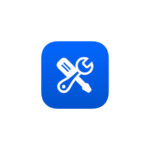
Apple enthusiasts have raised serious criticisms on Google applications not feeling native to the iOS platform. In other words, Apple enthusiasts think Google applications were built with programming languages not specific enough for the iOS platform. Earlier in 2021, Google designers have seen the need and have reached a decision to make significant changes regarding developing iOS apps.
For a while, now Google applications on iOS have looked and worked close indistinguishably from their Android counterpart. That in itself has griped Apple enthusiasts to feel that Google does not respect common iOS conventions and thus resulting in a conflicting user experience between first and third-party clients. Meanwhile, this is so because Google believes in “sharing UI parts across Google.” In building their own libraries, another focus was “filling gaps in UIKit,” Apple’s framework for building apps.
According to Google’s Lead Engineer for Designs on Apple platforms, Jeff Verkoeyen on a recent thread on Twitter says “We continued on the pursuit of cross-platform pixel parity, our iOS components were slowly drifting further and further from Apple platform fundamentals because those fundaments were also evolving year over year.” All that work was eventually open-sourced as Material Components for iOS (MDC) to allow any third-party developer to adopt the same UI elements used by Google’s iPhone and iPads apps, like floating action buttons (FABs), chips, and snackbars.
In response to the plight of iOS users, Google at the start of 2021 “began a deep evaluation of what it means to build a hallmark Google experience on Apple platforms,” and asked: “Does a switch really need to be built custom in alignment with a generic design system? Or might it be sufficient to simply use the system solution and move on?” There Google reached the conclusion that the time had come for a new approach and that Apple’s UIKit had matured enough for internal needs. Google concluded there was no longer a need to preserve the custom components that it created over the years, including app (top) bars, lists, and menus. Instead, the company will adopt standard controls practice and apply “light branded touches” to maintain Google’s appearance on the iOS platform. Although quite a number of these custom components would be needed to drive what Google is trying to achieve, however, “more attention and focus” will go into making it better.
In addition to the shift Google is making, in July the company put Material’s iOS libraries in “maintenance mode.” New releases and bug fixes will be limited, with documentation no longer updated. The company’s official guidance to past developer users is to “follow Apple’s Human Interface Guidelines and consider using modern UIKit components or SwiftUI instead.” That said, it also plugged Flutter as the way to “get a Material look and feel across all platforms.”
Besides the feel of apps, Google has been quick to adopt recent iOS capabilities. This includes widgets for most major services and support for becoming the default browser or mail client. In fact, the Google Photos widget first debuted on iOS last year before coming to Android this August.
Meanwhile, it remains to be seen how Material You will impact Google apps on iOS. On Android, Gmail, Calendar, Docs/Sheets/Slides, Drive, Keep, and Meet have all been updated to Google’s personalized design language. Navigation is unchanged, but there are tweaks to various navigation elements, like the circular FAB turning into a rounded square. However, the bigger change is Dynamic Colour where the entire app adopts a colour palette based on your wallpaper. It’s unlikely that DC will come to iOS, and updated apps will just end up using a blue tint, like on older versions of Android.
Discover more from TechBooky
Subscribe to get the latest posts sent to your email.







